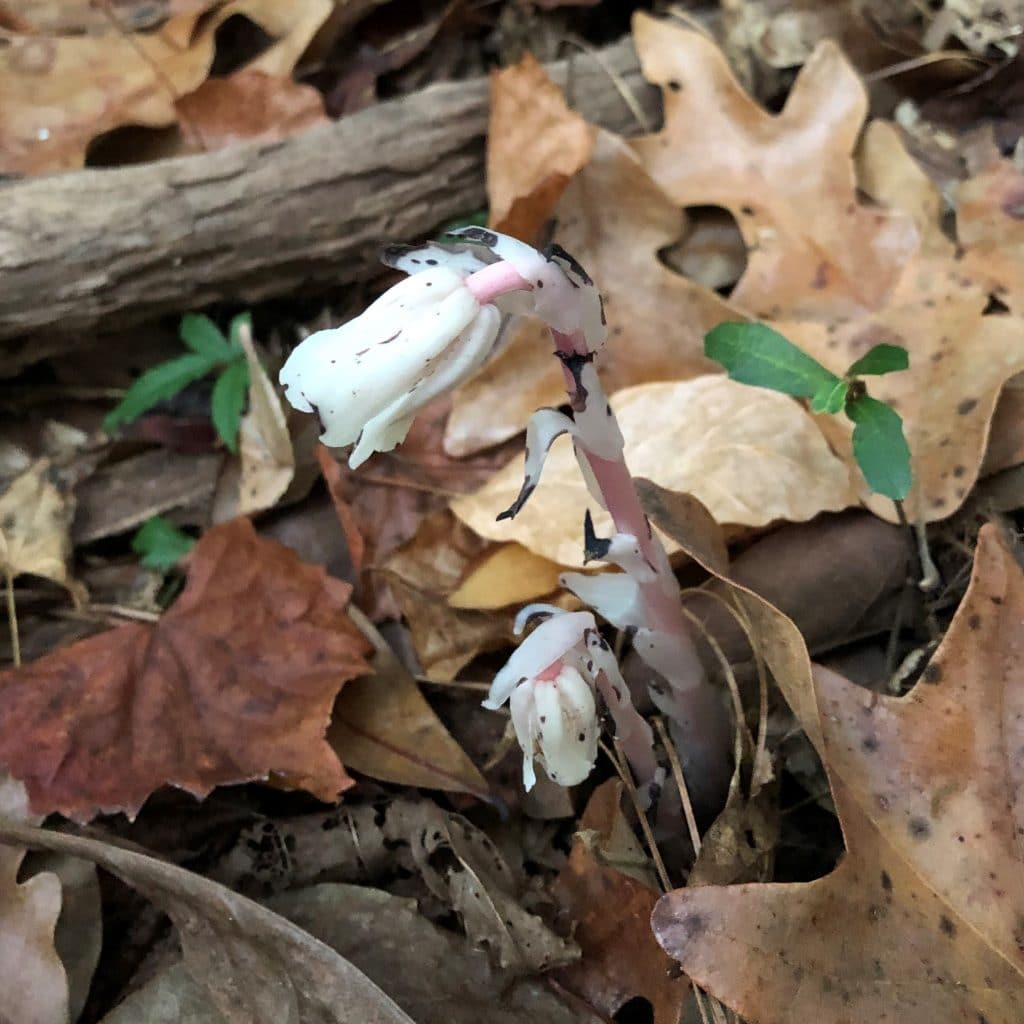There is rarely a time of the year when something isn’t blooming in the South, even the cold days of our winters. Most of the leaves on our deciduous trees and shrubs have fallen. The older leaves of our evergreen trees are also changing color and will soon follow. There are, however, blossoms in our woodlands this time of year, if you look closely.
Looking carefully is the key to finding the creamy white flowers and white and pink stalks of the Ghost Plant, also known as Indianpipe, Monotropa uniflora. Although not restricted to blooming in the winter, this flowering plant blooms after major rain events, that often come this time of year. Mushrooms also appear following rain events, in the same places, in the leaf litter under trees.
The association of mushrooms and Indianpipe is not by accident, but by obligation. Indianpipe is, after all, a parasite of certain types of mushrooms! Like mushrooms, most of the structure of the organism, is found within the soil, with only the flower stalks and flowers emerging above ground. Yes, Indianpipe is a flowering plant, related to blueberries.
The 4 to 8-inch tall flowering stalks often appear in clusters. The genus name Monotropa refers to the fact that this plant receives its nutrients from a single source or “troph” – mushrooms. Some parasitic plants, like Mistletoe, obtain nutrients from more than one source: their host plant and from their leaves that contain chlorophyll. Except for small black specks on the leaves, stalks, and petals of the flower and pink stalks, Indianpipe lacks pigment.
The species name, uniflora, reflects the single flower that sits atop each stem. Flowers hang downward when they first emerge, turning sideways as they mature, and then pointed straight up when seeds ripen. The entire process transpires within a few days to a week.
The neatest part of this story is the relationship of this plant with mushrooms and the trees with which they in turn are connected. These plants are parasites of mushrooms. The mushrooms and the trees, however, are symbiotic, with the mushrooms sharing nutrients and the trees sharing sugars. Indianpipes are in effect, uninvited guests to the feast – that flows from trees to mushrooms to parasite.
So, keep a keen eye out for the Ghost Plants that lurk amongst the mushrooms in your favorite woodlands.
Hope to see you in our great outdoors!




